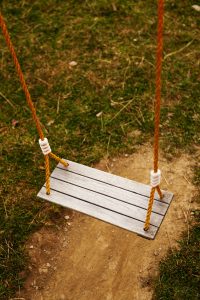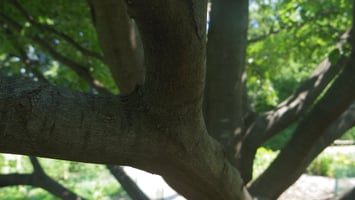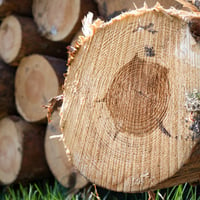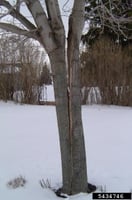Tree care is an ongoing process that begins the first year of planting and is continued throughout...
Questions for the Arborist: Swings
Many adults have fond memories of tree swings, and today’s homeowners want to pass on these memories (OR keep making new ones- tree swings can be fun for anyone!). We have been asked a lot lately about the safety of tree swings; parents want their children to be safe and their trees not to be injured. There have been many debates about the best way to hang a swing and today we are sharing the two methods we recommend.
Why can tree swings be a hot topic? There have been many injuries and even some fatalities involving tree swings. We want everyone to be safe, but still have an enjoyable time outdoors and in trees. If you ever have concerns about the safety of your tree swing, don’t wait, remove it from your yard immediately to prevent injuries.
Another reason tree swings are a hot topic is because often they are installed incorrectly and cause damage to the tree. You may be familiar with the term girdling. This is when rope, or any object, is wrapped around a branch or trunk of a tree for a long enough time it will rub and damage the bark or in some cases the tree’s growth will be constricted around the circumference of the tree causing the tree to grow around the object. This act disrupts the cambium of the tree interrupting/restricting the flow of nutrients to the tree. There are ways to avoid this from occurring.
Our approach to Tree Swing Bliss:
-
Choosing a Tree: Right tree, right place
-
Species
- You must choose a tree that is not only healthy, but also a strong species. Some trees are more susceptible to damage than others. Choose an oak, beech, sycamore and preferably not evergreens or maples.
-
Branch size
- Choose a branch with at least a 8 inch diameter. Look for a horizontal branch with room about 3 feet from trunk. This will prevent swing running into the tree.
-
Condition of branch
- Does it look healthy? Check for fungus or any other signs of decay on the branch.
-
-
-
Materials

- Type of Rope
- 1/2 inch (or greater) diameter polyester rope. This rope will be outside in the elements. You want to choose a quality rope.
- ( If using eye bolts you can also attach a chain instead of rope)
- Eye bolt, 1/2 inch diameter (or larger)
- 2 carabiners (make sure to check the weight load!) These are not a necessity, however they will help maintain the condition of the rope for a longer period of time.
- Plastic or rubber to protect the branch (if using knot method)
- Your seat! Many different options to choose from: a tire, scrap wood, deck material, manufactured swing, whatever durable material you can think of!
- Type of Rope
-
-
2 Methods of attachment
-
Eye bolt
- It may seem counterintuitive to drill into a tree to avoid damaging the branch, but this wound will be small. Drill a hole large enough to fit the eyebolt, screw in the bolt. Attaching a carabiner and rope will help the rope last longer than only using the eye bolt. What knot to use?
-
Rope and Knot
- If you choose not to drill into the limb, and want to tie a rope around the branch, you must take measures to ensure the rope will not damage the tree. Use a rope sleeve or piece of rubber around the rope section that will come into contact with tree. When tying your knot its important to use one that will allow the rope to loosen when not in use. The running bowline will work for this purpose.
-
-
Keep in mind..
-
- As with any outdoor equipment, your swing and branch will need to be monitored. Check for signs of decay or wearing of materials.
- Young children should always be monitored around ropes.
- It may give you piece of mind to be able to tie up the swing out of reach of small hands when there isn’t an adult present to supervise children.
Happy Swinging!!
Tree concerns? Call us today, consultations by a certified arborist are free and very informative!




